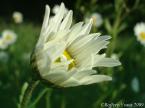
Flowers are very attractive subject matter especially for those artists who really love any species of it. Despite the range of flowers that exist in nature, this project should not be off-putting. Flowers can be broken down into its important parts to help you with your drawing and painting.
Sketching the Flower
In sketching, you can either use a real flower or a photograph of it. Tulips work well as a simple flower subject. First, put the flower in a vase to keep it steady. Using your pencil, sketch the flower, following the gentle curve of the stem. Continue until you are satisfied with the sketch of the stem. Then start sketching the inner most flower petals, use dotted lines to reflect where the petals overlap one another. Start from the center and move outward. Once you feel satisfied with the arrangements of the petals, you can then erase the dotted lines. Don’t forget to sketch the pistils and stamen if they peek through the top of the petals.
Painting the Petals
Try to observe carefully the shadows and how they appear on the flower. This affects the color temperature of the flower, making the flower look more lifelike. The warmer the temperature, the lighter the shade of the color and the cooler its hues the darker the shade will be. Using pictures is helpful in this because the light can change the shadows on the flower before you have completed the painting.
To start with, use a heavy cartridge of paper. Then make an underwash for the flower. Underwash is a universal color that seems to lie beneath the whole flower and will be the flower’s lightest hue. This remove the white of the paper and gives a good contrast to the color temperatures you will apply to the petals. Use a watercolor underwash and an acrylic paint as the surface paint. Coat the colors on the flower in stages, depicting the various color temperatures. Build the colors on top of the underwash, keeping an eye out for the variation in color temperatures. When creating brush strokes, always remember that there are color lines in the center of the flower that pull outward toward the ends of the petals.
Painting the Leaves and the Stem
You can use the method above regarding the underwash and color temperature for the leaves and stem of the flower. Take note that the most distinguished aspect of the leaf is its vein structure and how the light and shadows reflects off of the leaf. When sketching the leaf, make a general outline of the leaf, applying the details later when you start to paint the leaf.
The key to achieve a successful floral painting is to paint in stages, building color around the light and shadows on the leaf and adding vein detail after you have accurately reflected the color temperatures on the leaf.
Truly, floral paintings are good for wall decorations either at home or in your work. Another genre of paintings that can also add and intensify your room’s personality is abstract art paintings. Abstract art are perfect for those people who love to exercise their mind and imagination. Buy abstract art now on a gallery or on line!


 I know every artist wants to create the best and unique artwork. This goal is of course difficult to obtain if you are a beginner. Here are some tips to help you with:
I know every artist wants to create the best and unique artwork. This goal is of course difficult to obtain if you are a beginner. Here are some tips to help you with: